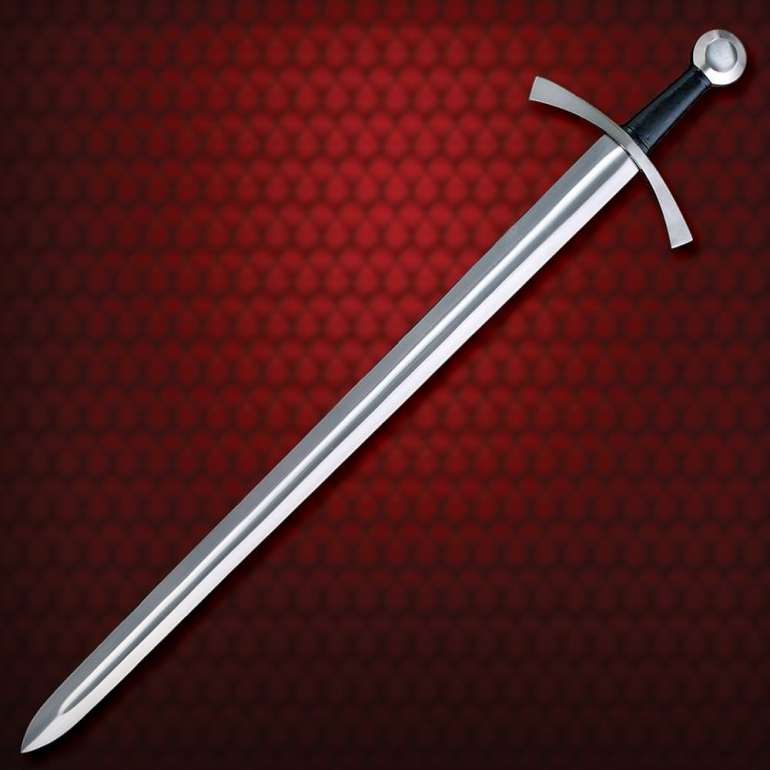
Non Nobis, Domine, Non Nobis, Sed Nomini Tuo Da Glorium Leather wrapped scabbard has matching bronze fittings. The blade is from well-tempered high carbon steel, the wood grip is wrapped in fine black cord and the detailed parts have a dark bronze finish.

The fullers are engraved in Latin with the inscription Who lives in falsehood slays his soul whose speech is false, his honor, something Hotspur took to heart. We have named this hand and half sword for Hotspur and that battle. Hotspur was considered the greatest knight of the realm and held honor sacred. This demand, though obeyed, was the seed that began the long Percy Family revolt that ended years later with the Battle of Bramham Moor. Henry IV demanded the prisoner so he could collect the ransom himself. During a border raid, the Scottish leader, Archibald IV, Earl of Douglas, was captured at a battle on Homildon Hill by the Percys, led by the younger Sir Henry "Hotspur" Percy. The border defense thereby fell largely to the Percy Family of Northumberland. 83 by Ewart Oakeshott.ĭuring the English-Scottish Wars, the King of England was preoccupied with the Hundred Years' War in France. Can be seen in Records Of The Medieval Sword on pg. This is a true fighting sword, and one that any Viking would be proud to carry in battle. Scabbard is wood covered in leather with steel mounts. Blade is polished with the fuller etched to show the Damascus construction of the blade. Our version is made by Windlass Steelcrafts® of high carbon Damascus steel. The early style blade is well-suited to the quick, slashing blows of the Viking warrior. It has the lobed pommel loved by the Norsemen, but the cross guard contrasts slightly with the typical downcurved versions.

Damascus, or pattern welded steel, was used to make the blade strong enough to withstand the rigors of combat.Įxcavations of a number of circa 850-900 Viking swords turned up this lovely Damascus specimen in Finland. Although iron was a tougher material than bronze, it would frequently bend. Early Viking swords were forged from layers of iron interwoven with strands of steel to produce a very tough sword. Often overlooked by modern sword lovers is the tremendous amount of stress placed on a sword blade during battle.


 0 kommentar(er)
0 kommentar(er)
